What inspires your designs?
My inspiration started with my Moroccan heritage. As a young girl I remember admiring the dresses women were wearing at Moroccan special occasions, like weddings. They had these beautiful caftans in vibrant colours and with unique embroidery, beading and other embellishments, depending on the trends at the time. The matching belts would emphasize their waste and complete the total picture of the luxurious robe. I loved seeing how these ladies wore them with pride and grace. They felt beautiful and feminine. In my culture it was common back then that women celebrated together apart from the men. That inspired me as well. There you have a space filled with women, of all ages, who wore the most beautiful dresses and looked their best, just for themselves, eating, dancing and singing together. That powerful vibe is indescribable. And as I grew up I started to join them of course and develop my own taste and style in fashion. And that is exactly my inspiration: introducing my taste of Moroccan designs to women of all nationalities and connecting them with the powerful feminine vibe and self confidence that comes with wearing them.
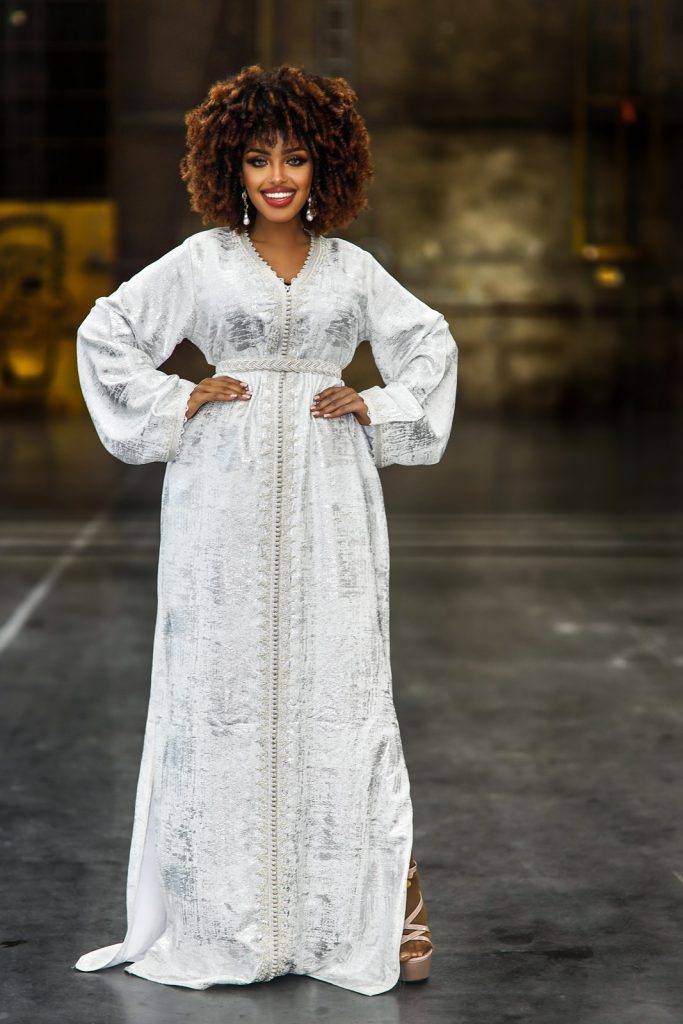
How do you stay updated on current fashion trends?
Besides following the ‘normal’ updates like using magazines, watching fashion shows and following celebrities I also do my own specific things. First of all, and this sounds very silly maybe, but I love watching what female presenters wear on Moroccan television channels like 2M. Especially the development of the modern clothing style of 2M host Samira El Beloui really speaks to my designer heart. Secondly, I see the female Moroccan Royal family members as the patrons of our fashion heritage. The caftans they wear are Taqlidi (traditional) and timeless at the same time. Their robes are always simple, but elegant.
The trends of modern and traditional caftan styles combined with of course the newest fabrics from Morocco or Dubai and with my own personal creative touch are definitely the ingredients for my next trendy line.
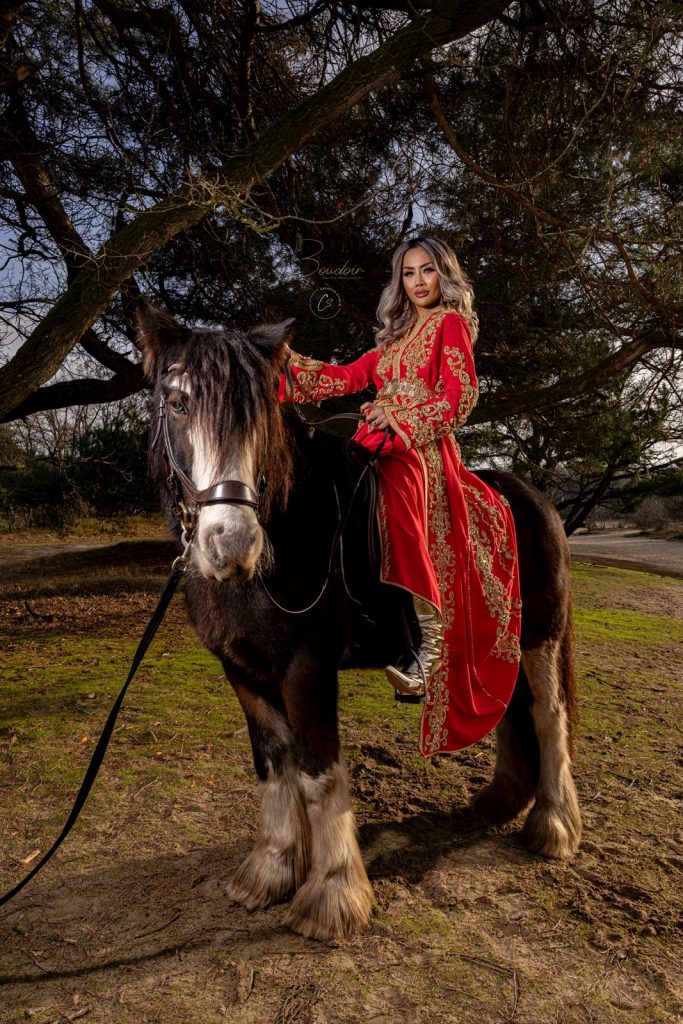
Are there specific themes or elements that often recur in your designs?
The basis of my designs all starts with the caftan. This Moroccan traditional dress is a long flowing robe often worn with a matching belt at special occasions. The caftan to me is like a canvas that I start with and creatively turn into a unique painting. Characteristic for my designs is the endless possibilities, shown in colours, patterns, fabric and even the type of models wearing them. The typical Moroccan handmade strips called ‘sfifa’, the handmade buttons ‘La3kad’ and embroidery are details that complete the look and can be customized. There is a Boudoir dress for every woman.
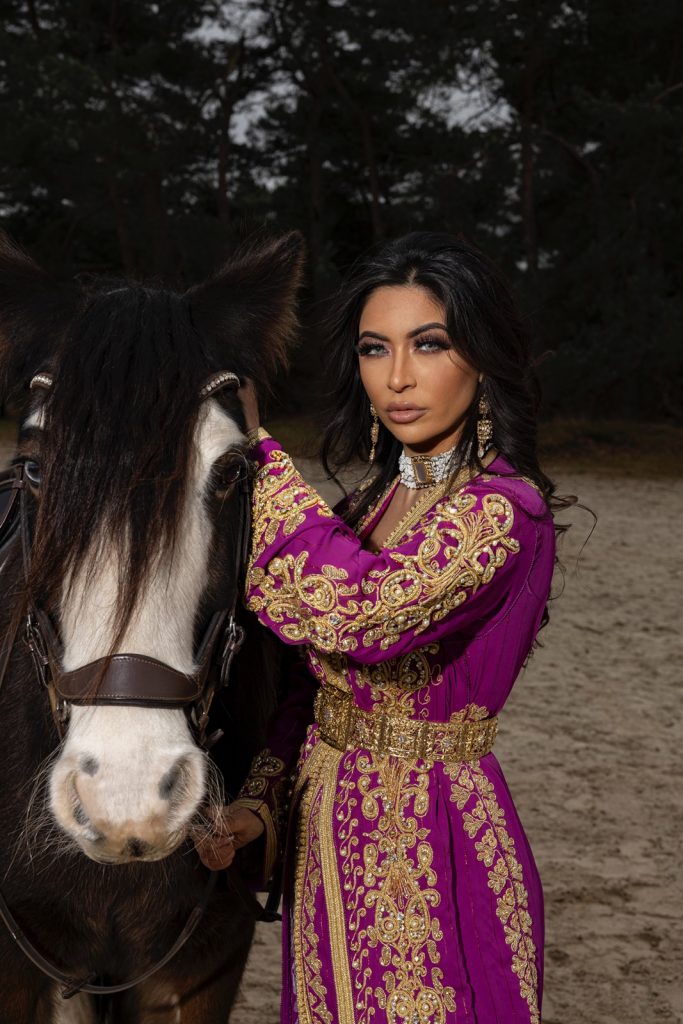
Can you describe your creative process from concept to final product?
The creative process starts as soon as I have clear when I would like to launch my next collection. That could be a winter collection or for example my current target, the Paris Fashion Week in February 2024. Of course that sets the foundation for things like how big the collection would be and what theme or audience to inspire with my designs. And the creative process starts immediately after that. Choosing fabric, patterns, colours, details in designs, even models start to form, in a non-sequential way, this picture in my mind and on the canvas, with changes during the process. When the design is complete and ready, I don’t only see it, I feel it as well.
How do you balance creativity with practicality in your designs?
In general a caftan could be big and even heavy to wear. However, by choosing high quality fabric and selecting the kind of fabric consciously the caftan can be actually very practical and gracious at the same time. The lining of the dress is essential as well. And even though the caftan seems to be a robe that could easily fit anybody, I am very adamant about fitting. That makes or breaks the look and practicality of wearing. Sleeves, length, width and shoulders, it all has to fit perfectly, no matter what size you are. That is why I am happy about the feedback I receive, that even when the caftans sometimes have multiple layers, women are still able to feel feminine, walk graciously and dance freely.
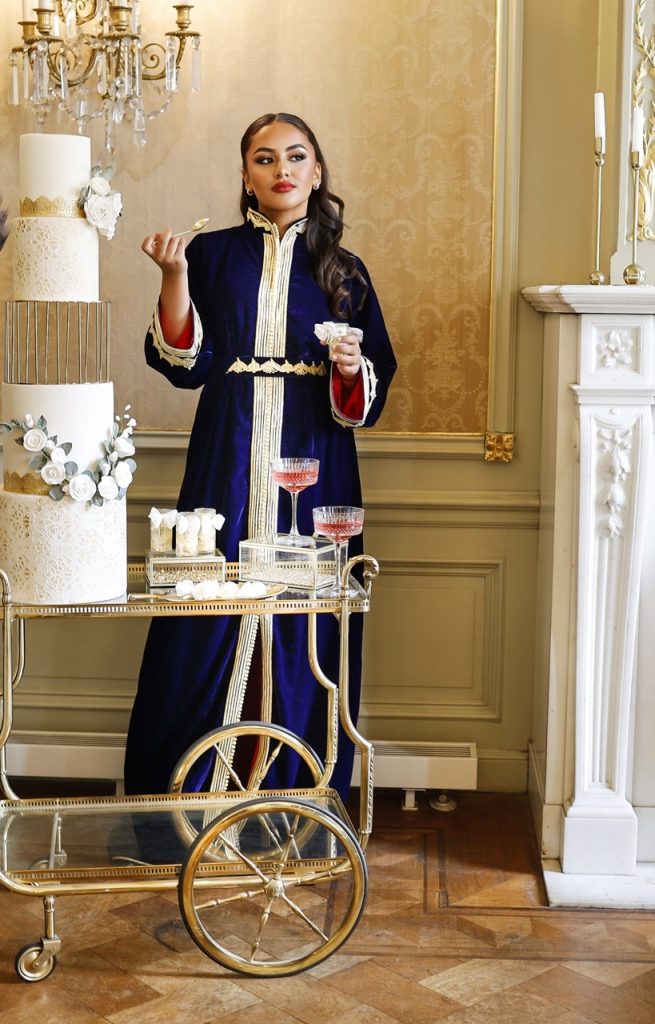
Do you have any rituals or routines that help you get into a creative mind set?
Not really, I might develop routines in the future, but I don’t have them now. I feel blessed that as soon as I put myself in front of that canvas, the creativity starts flowing. In fact, sometimes I need to temper my creative mind more than stimulate, especially when I need to focus on something else.
What has been your favourite project or collection to work on, and why?
That would be, without any doubt, the collection and the shoot of last august (2023). It was my second big and my first winter collection. I will always remember that this was the collection where I gave it all, I gave me. I felt confidence mixed with some insecurity and I felt no boundaries but with some fear as well. And still I choose to take this risk and to just do it. The designs, patterns and bright colours of that collection were speaking for me to the world. As a person I was ready for that move and that is why this collection will always be a very personal one to me.
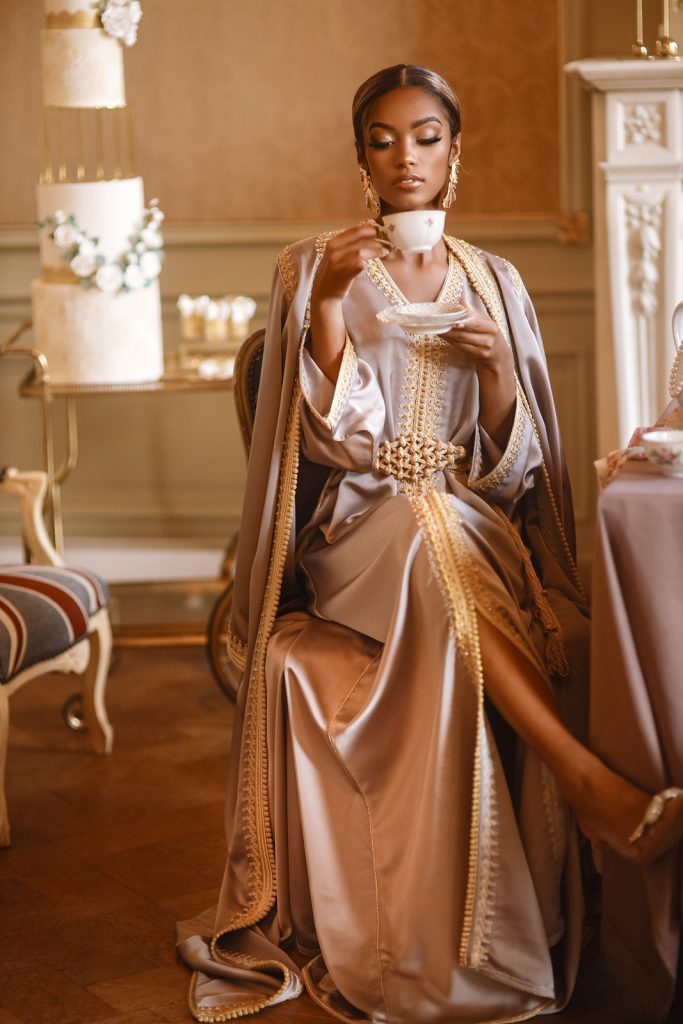
Is there a particular piece or collection that holds special significance to you?
Absolutely, that would be my signature Boudoir Belt design. The design was created by me with the spirit of Boudoir in mind. The logo is elegant, luxurious and feminine and not to miss on any Boudoir caftan. When the goldsmith sent me the first sample, I was beyond excited. This is a personal piece that would connect all my designs. When reality sank in, there was nothing but pride and gratitude to have reached this significant milestone.
What are some of the challenges you face as a fashion designer?
Time pressure can be a challenge for sure. I tend to dream big and to be a perfectionist at the same time. Combining that with deadlines or for example organizing shoots can be stressful. Another challenge is when I have this vision in mind at the start of the design process, not knowing how it eventually will work out. I worry about things like finding the right fabric, the practicality of the designs and if people will actually like them. I wish there could be a magic stick that brings the vision to life immediately, but that’s not reality. I learned that I need to be patient, have faith in my creativity and enjoy every step. The end result will follow.
How do you overcome creative blocks or design challenges?
So far I haven’t really experienced them, but I just started. I am sure they will come.
How do you see the fashion industry evolving, and how do you adapt to these changes?
The power of social media is undeniable, so I invest a lot of my time in connecting with the world in this way. I also love the fact that fashion for women in all sizes is becoming more and more the norm. For me, this means the sky is really the limit. I can design for every woman worldwide and reach them as well!
Are there any emerging trends or styles that you find particularly interesting?
Sure, I have already mentioned the trend that high fashion can be for all sizes now. The ideal image of a woman is gone and instead we embrace women for who they are more. Fashion is a huge opportunity to support that embracement.
Another interesting trend I hope to see (I’m being cheeky here) is the discovery of cultural gems like caftans. The kimono is a beautiful example of that; it’s a worldwide known fashion item. My message is, there is more. Instead of recurring trends, let’s tap into cultural history and see how we can bring that back to life again in a fashionable way.
How do you approach collaborating with clients on custom designs?
That starts with good listening to what they are saying, but also to what they are not saying. Helping them by asking questions to get to the level where they know what design will help make them feel beautiful, fashionable or gracious is key. In the end it is a joint creation of a caftan that hopefully exceeds expectation in looks, but also gives that ‘yes, that’s how I wanted to feel’ vibe.
It is a process of trust that goes both ways.
Can you share a memorable experience working closely with a client?
Yes, I had a client who expressed some wishes for a caftan, but she gave me all the freedom to design. She didn’t see it until it was finished. Of course that was nerve-racking for me, worrying it wasn’t what she wanted. But she loved it and radiated joy and confidence when she wore it. In that moment I felt humbled and grateful to be part of that total picture I saw.
Check out our recent edition of Ganap Magazine:
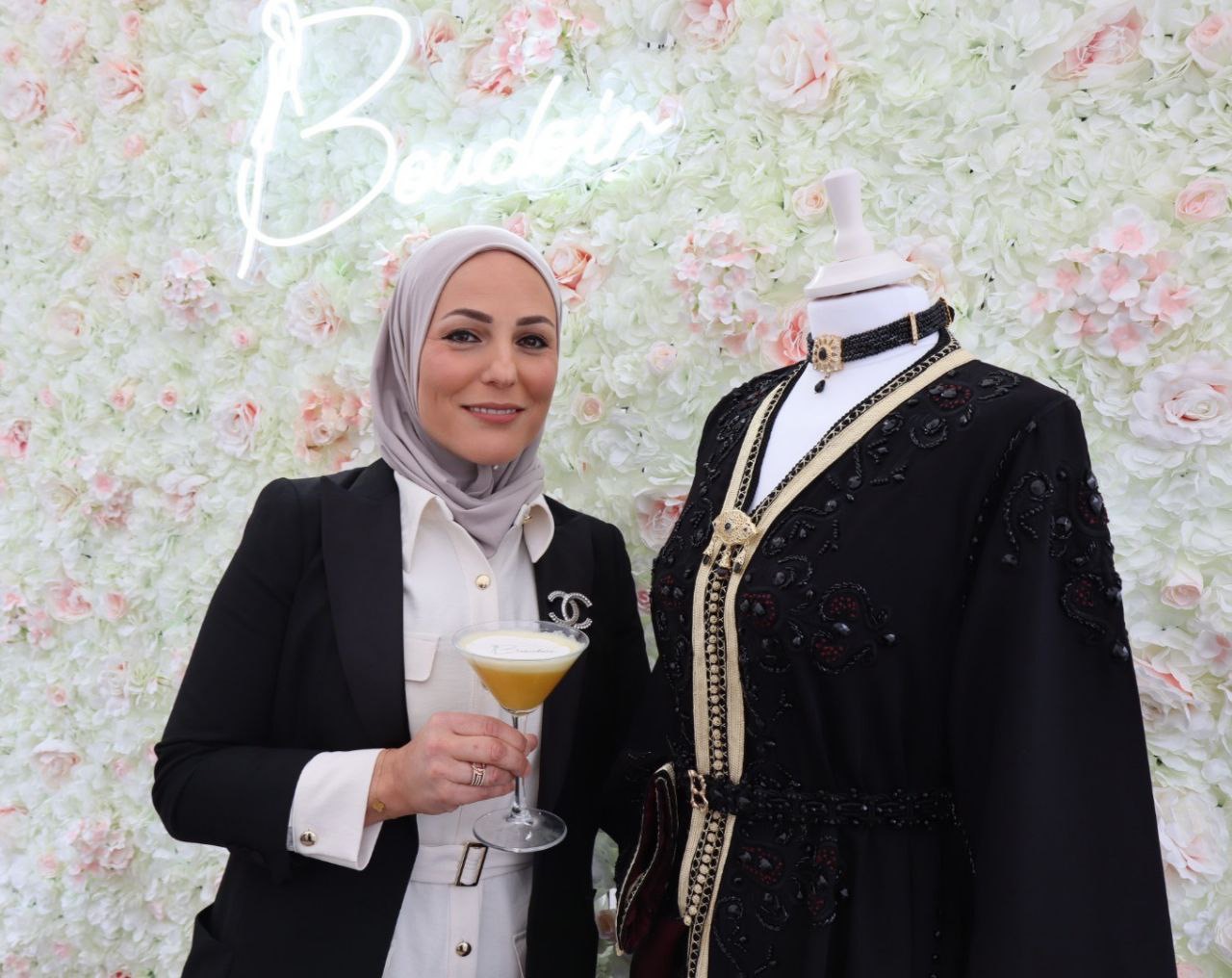


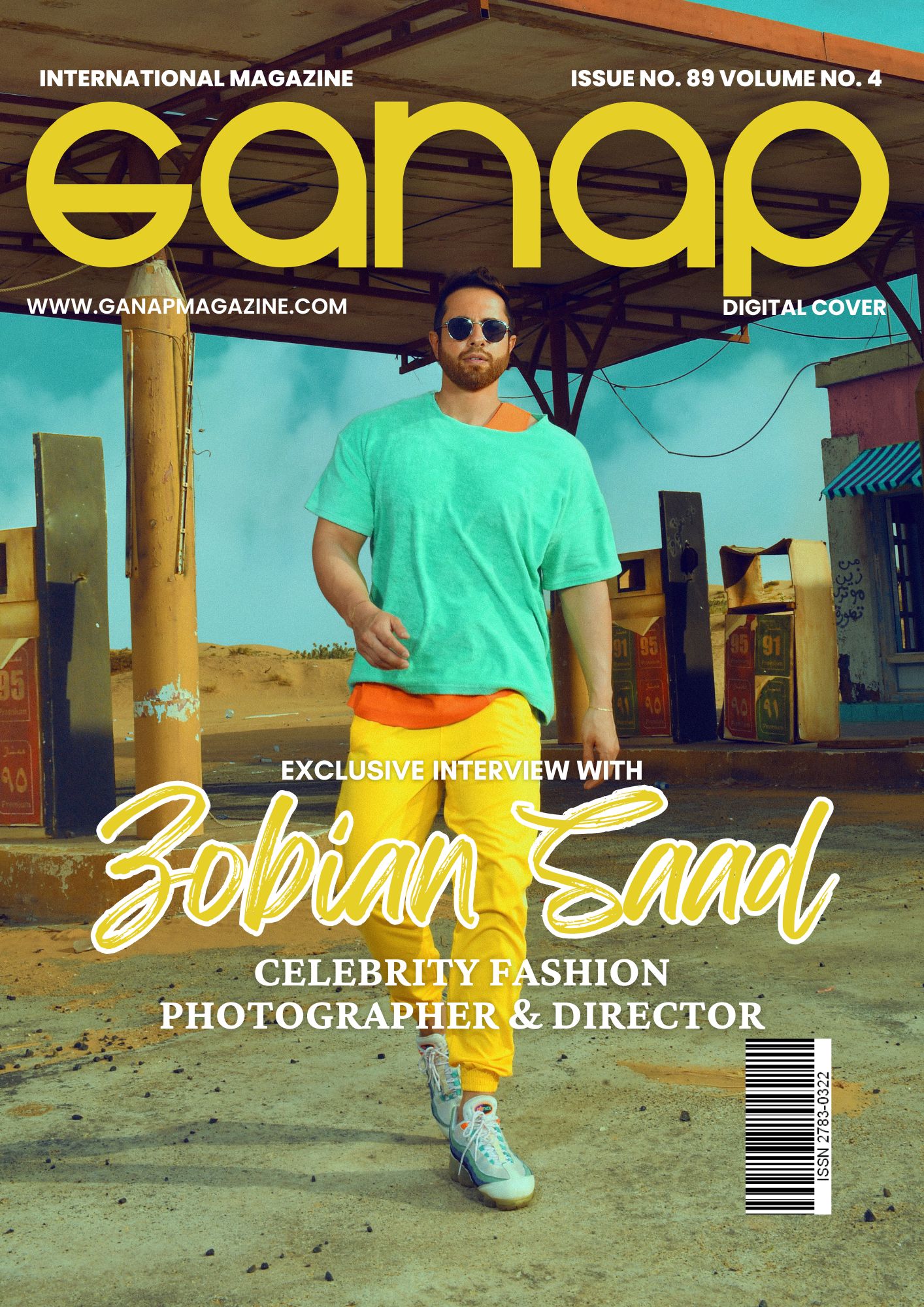
Leave a Reply